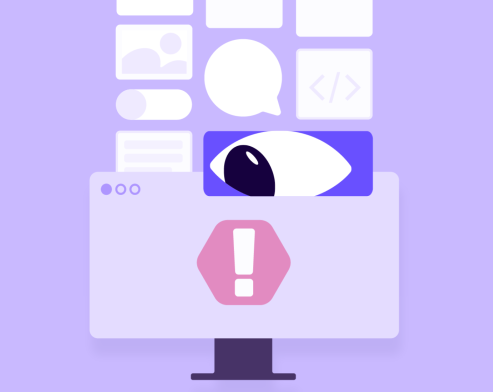What is design verification vs. validation?
Many industries use design verification and validation, from software to medicine.
These two critical steps ensure a product is functional and meet user needs. While they’re both part of the design process, they have different focuses.
Let’s learn more about the difference between design verification and validation, discover mistakes to avoid, and the benefits of both processes.
Don't let UX problems go unnoticed
Use Dovetail to analyze all your customer interviews and uncover hidden UX issues that are costing your business every day.
Analyze with Dovetail
What is design verification?
Design verification tests whether a product can achieve its purpose and identifies any glitches.
In software testing, verification is static testing where designers test without executing any code. It looks at the performance of the product rather than its inner workings.
If you’re building software, functional testing ensures every feature matches requirements and specifications.
What is design validation?
Design validation involves testing a product to meet the users’ precise requirements. Tests ensure the product is an ideal match for users.
In software products, dynamic testing executes code, but you can also use prototypes.
An example of design validation for a mobile app would be conducting user testing and interviewing subjects to get their feedback. This is a great way to see how users experience the app and reveal any issues.
Design verification vs. validation
It's easy to confuse design verification and validation, so keep these key differences in mind:
Verification is an internal testing procedure that tests the product against requirements.
Validation is an external process that measures the product's success in users’ eyes.
Design verification ensures you've designed the product properly.
Validation ensures you've designed the right product: It may work perfectly and pass verification tests but still not serve the needs of your end users.
Verification and validation are essential and complement one another.
The design verification process
Here are the typical stages of the verification process:
Preparation and planning
The verification process applies to every feature or specification of the product. Every specification must be verifiable.
Designers identify the appropriate verification methods and note any necessary tools and resources. You’ll extensively document the software or product you’re testing.
Execution
Conduct tests according to the plans you made in the preparation phase.
For a software product, you’ll typically divide the process into:
Requirements verification
Design verification
Code verification
Identifying any issues
Documenting the results
Issuing the report to stakeholders
What is design verification FDA?
You need to adapt the design verification and validation process to the needs of different industries.
For example, when designing medical devices, you need to comply with the US Food and Drug Administration (FDA) requirements. These guidelines are often more stringent than those in other fields.
The FDA’s specific guidelines include:
Justify your sample size during tests to ensure results are statistically significant.
You must conduct design validation on representative products: For example, a prototype must be similar enough to the final product that the test results are applicable.
You must conduct tests to ensure product quality and safety in areas such as usability, clinical investigation, electrical safety, packaging, sterilization, and biocompatibility.
The design validation process
The design validation process has some similarities to design verification. However, certain types of testing are unique to validation:
Preparation
First, identify relevant testing methods. User testing is one of the best ways to determine whether the product can serve users' needs.
You’ll usually test prototypes or beta versions.
Execution
Designers commonly use several methodologies in the design validation process.
Google created a system called the Design Sprint, which is a useful way to validate products. Bagavathy Durairaj describes the process for checking a product idea with the five-day design sprint model.
User testing is a commonly associated process for validation, especially for an existing product.
Advantages of design validation and verification
Design validation and verification are immensely valuable for the design process:
Benefits of design verification
You check progress at every stage to ensure the product meets all requirements.
You can identify design flaws early in the process and reduce the risk of releasing a product with major defects.
You can conduct tests can on prototypes to fix any problems.
Testing product requirements at every stage boosts productivity.
Benefits of design validation
It determines whether the product serves users' needs.
You can identify any obstacles or features that are confusing or difficult to use.
You can make changes if you find a gap between how a product should work and how it actually works.
Validation processes let you easily determine functionality at every stage.
Common verification and validation mistakes to avoid
Design verification and validation are crucial to releasing a final product that meets stakeholder and customer needs. Mistakes or oversights can cause serious problems with the final design.
The following are some common mistakes to avoid:
Rushing the process
You must take enough time to verify and validate a product to ensure you solve all issues. Everyone has time limits, but verification and validation should be priorities. Always leave sufficient time for these steps.
Insufficient resources
You may be unable to thoroughly verify and validate your product if you lack funding and technical tools. User testing can be costly, but it's an important step in the validation process.
Validating a product with the wrong user
You need a typical user to test your product for an objective idea of its performance. If a development team member tests it, the results may be unreliable.
Design verification and validation are crucial processes in product development. They can lead to a high-quality product that meets user needs and positively impacts the market. These processes also save time and money, leaving resources for more innovation and potential revenue.
Should you be using a customer insights hub?
Do you want to discover previous user research faster?
Do you share your user research findings with others?
Do you analyze user research data?